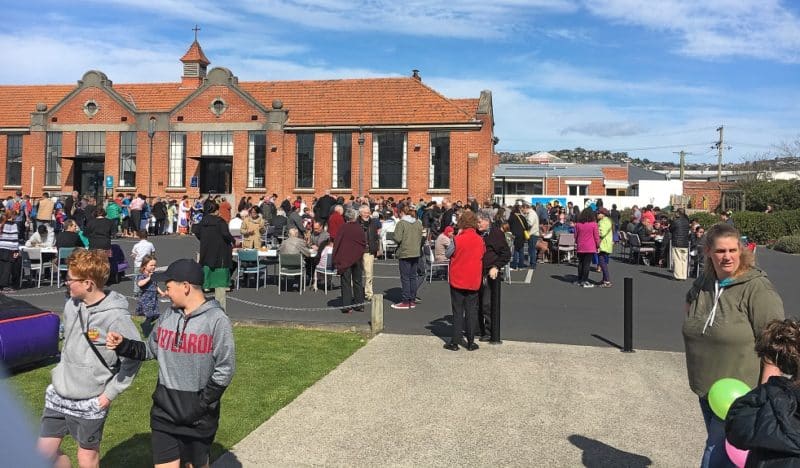by JEFF DILLON
A weekend remembering the good old days was spent recently at St Patrick’s Basilica in South Dunedin as the past 125 years was celebrated.
Friday night recalled the glory days of the Saturday night novena to Our Lady of Perpetual Succour which was so popular some 50 or more years ago that a special bus provided transport for those in outlying parishes who wished to attend.
Current parishioner Jo Bell organised a replica set of novena devotions for the beginning of the celebrations, which about 130 attended.
Following the Saturday night vigil Mass a slightly larger crowd enjoyed a presentation from Sean Brosnahan, a curator at Toitu Otago Settlers Museum.
In his coverage of the history of St Patrick’s he noted that the South Dunedin “Flats” area became home for an ethnically diverse selection of people but the largest concentration of Irish Catholics could certainly be found there.
Mr Brosnahan homed in on two contrasting people who contributed to the life of the basilica.
The first was Thomas Heffernan, who was born in 1839 in County Mayo, one of the poorest counties of Ireland. He was seven when the potato famine struck in 1846.
Evictions and further outbreaks of famine eventually saw him leave for Australia aged 21. In the early 1860s he made his way to the Otago goldfields and became a roading contractor, then in 1880 he and his wife Margaret opened the famous Heffernan’s South Dunedin Hotel.
The couple prospered and supported the building of the basilica. When they
died within weeks of each other in 1912 the family funded a stained glass window to their memory which can still be seen in the basilica.
The other person was Francis Petre, the architect for St Patrick’s. He was born in 1847 in Wellington and lived a comparatively privileged life, being educated at leading Catholic schools in England and France.
He returned to New Zealand in 1872 and settled in Dunedin. Here he designed the impressive Dominican Priory building, opened in 1877, and then the Gothic-style St Joseph’s Cathedral.
In the 1890s his church designs took a new tack and St Patrick’s was the first of his basilica-style churches. His original design was more ostentatious than what was finally opened in 1894 but had to be modified to what the mainly working class parishioners could afford.
With the fate of Petre’s greatest example of basilica designs intended for demolition in Christchurch, St Patrick’s remains a valuable testimony to his achievements.
About 500 gathered for a combined Sunday Mass concelebrated by Dunedin Bishop Michael Dooley and Christchurch Bishop Paul Martin.
That was followed by a shared lunch outside in fine weather to enjoy food, friendship, music and a bouncy castle for the children.

Reader Interactions